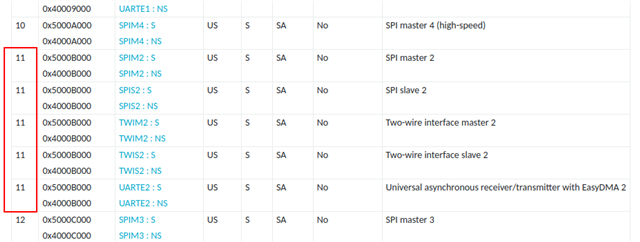I am struggling with the same requirement as this ticket : RE: NRFX UART RX CONTINUOUS RECEIVE where RX LEN is unknown
ie receive from a UARTE without knowing in advance how many rx bytes to expect. This is typical for exchanging AT type commands on a UART with another system...the receiver doesn't know how long the command being sent is going to be. In my previous nRF51/nRF52 projects, I just use UART ISR to get each byte, add to my fifo buffer, and detect LF/CR to know when I got a complete line...but this was before SDKConnect and not using UARTE.
Some questions:
- Using an nRF5340, its seems my only option is to use SDKConnect with Zephyr, yes? No more SoftDevice builds?
- do I understand correctly that the nrf5340 does NOT support basic UART, only UARTE? Only EasyDMA operation is possible (in the same way it doesn't seem to support TWI, only TWIM)
- I have multiple UARTs to service - but if as per the final reply in the ticket above I have to use 2 timers per channel (one to count bytes received, one to do the 'idle line' timeout) it seems I won't have enough timers?
what is the correct way to handle a UART on the nrf5340 for this use case?
Thanks
Brian
btw, I did look at the tutorials, but they are very basic (and use the zephyr driver which uses the same timer mechanism) so weren't much help... But if there is a good sample that is useable for a real application Id be very happy...



